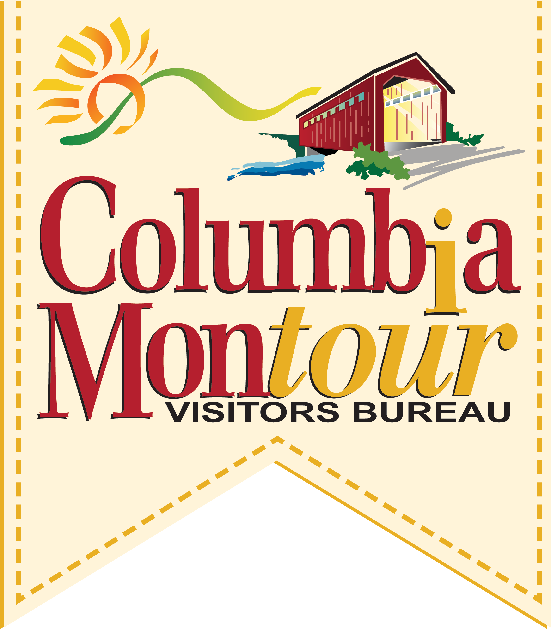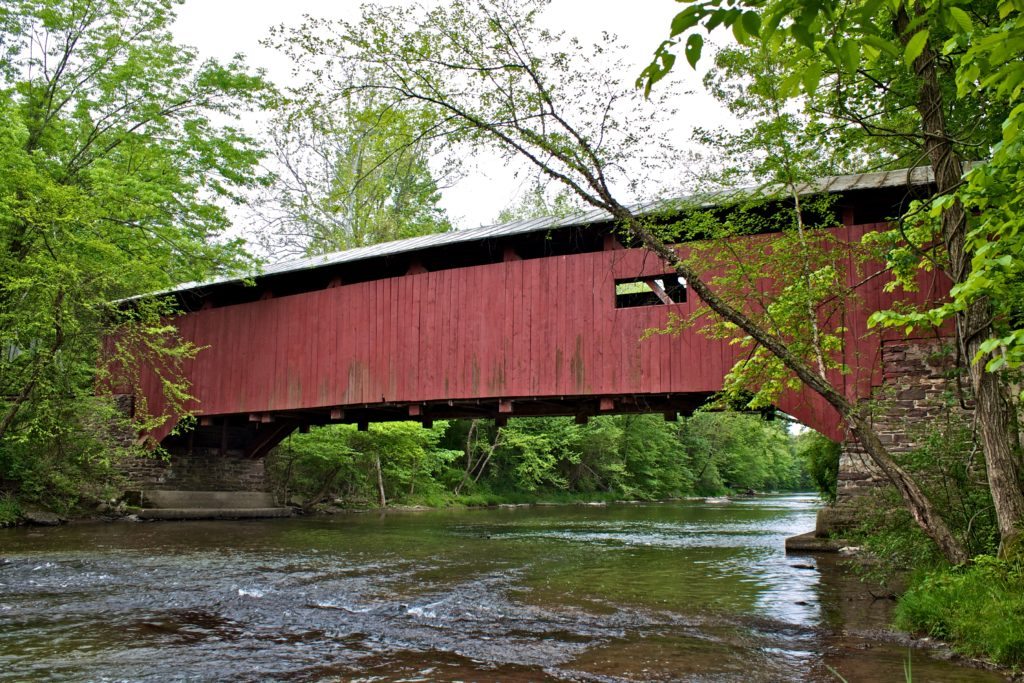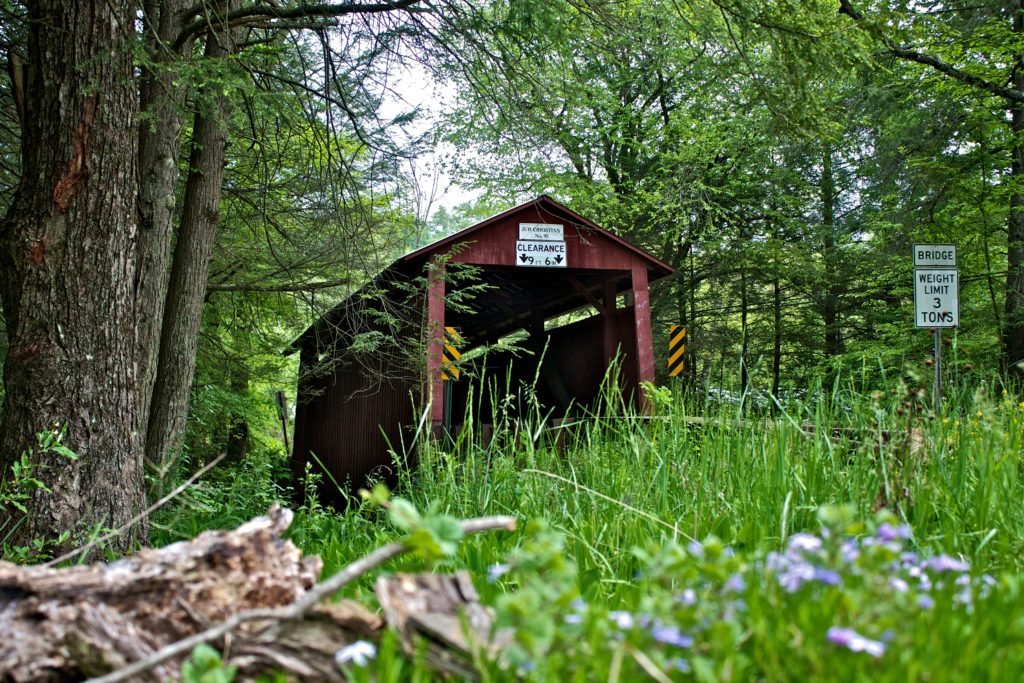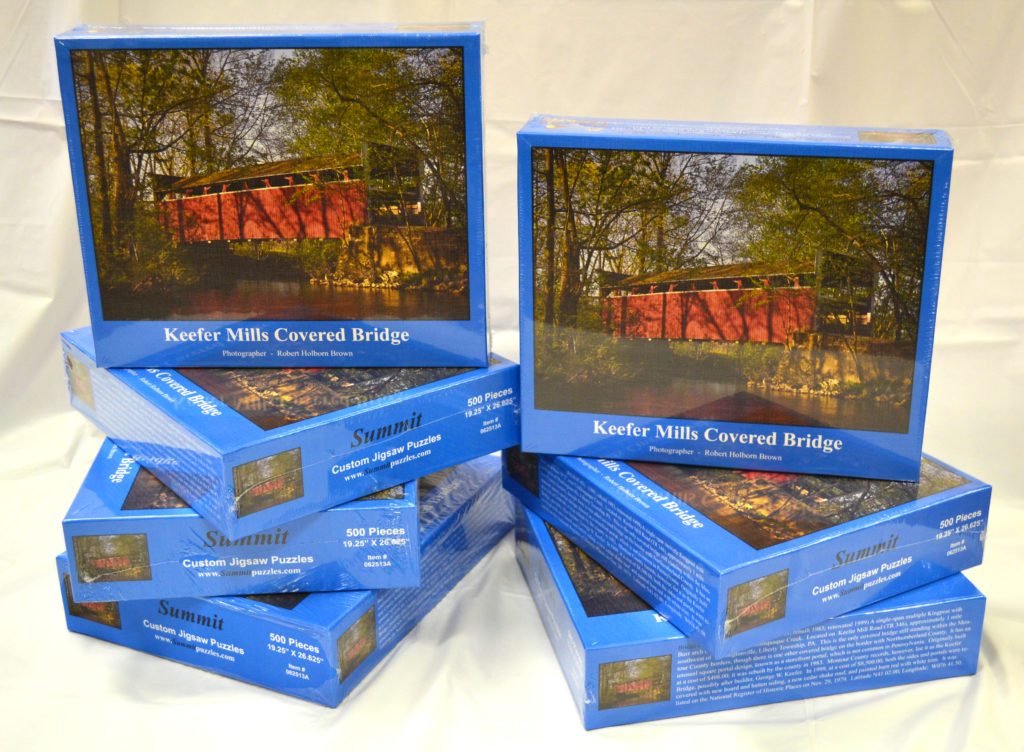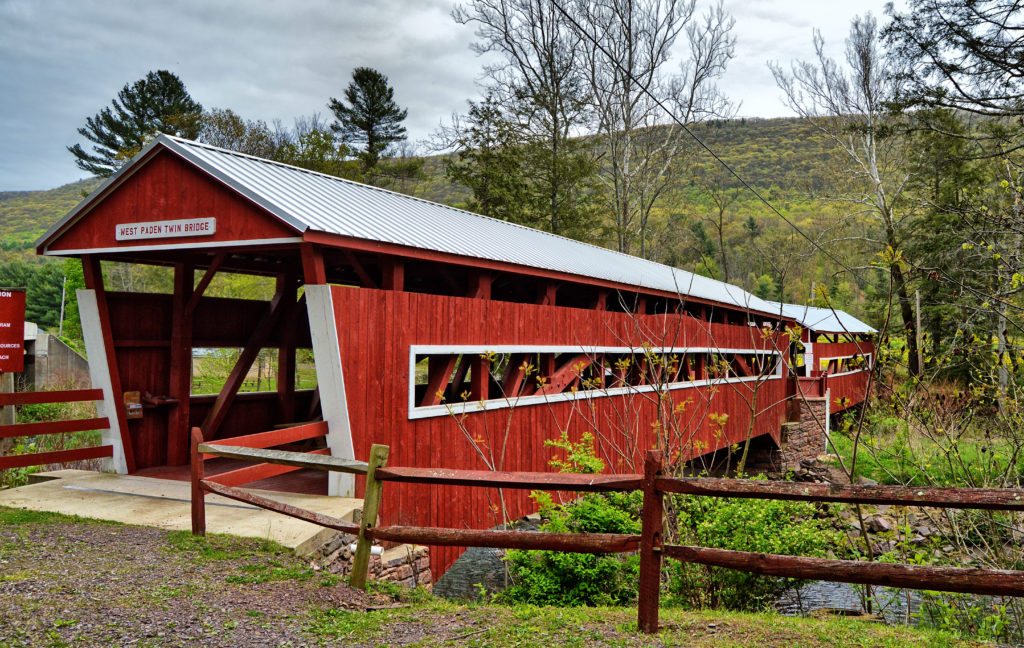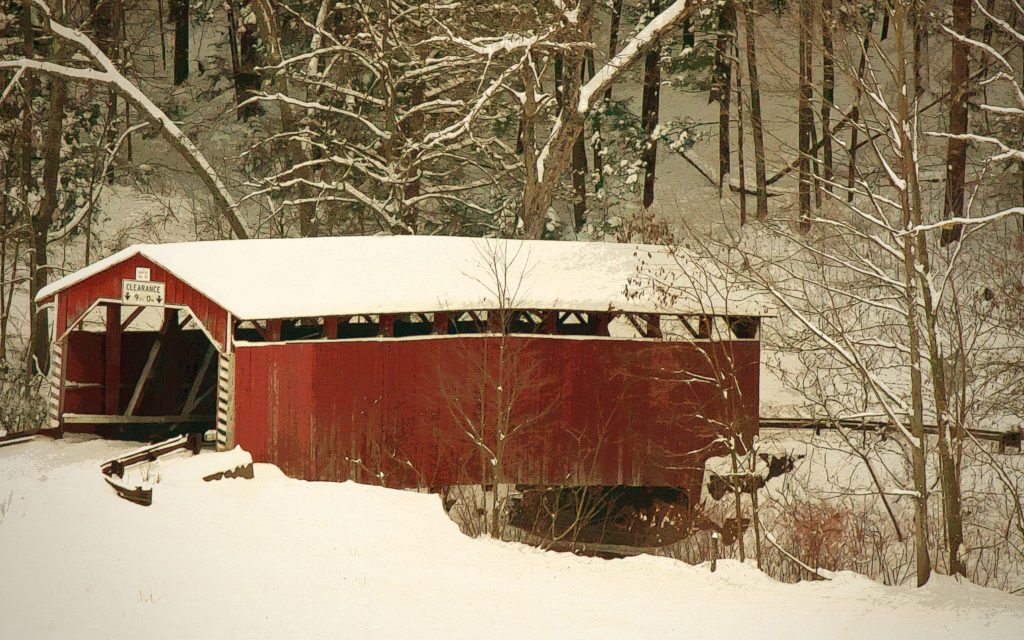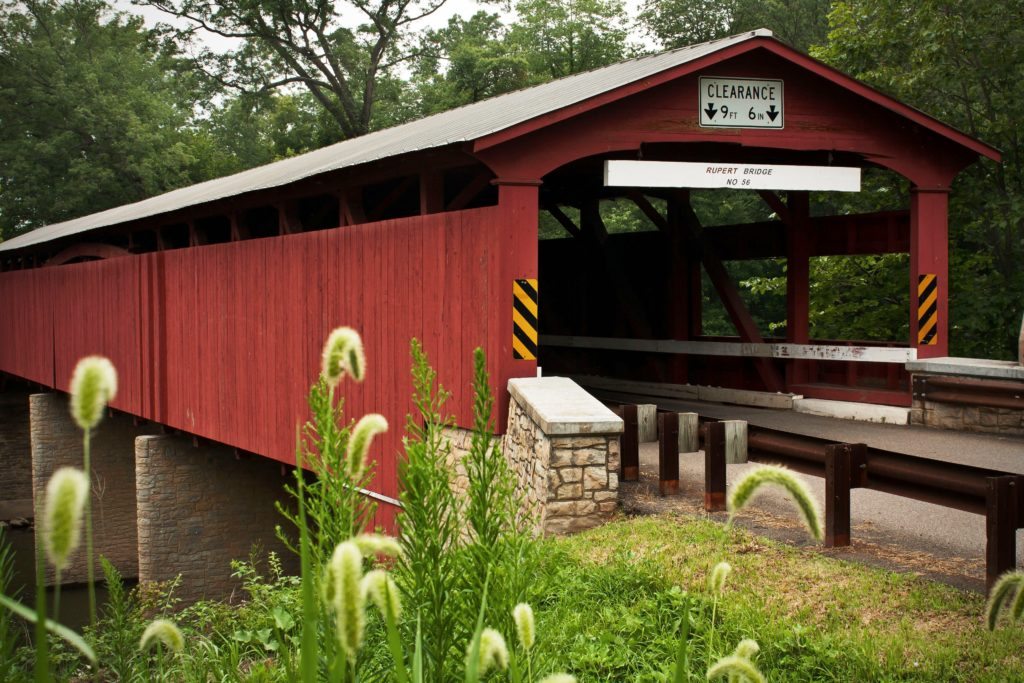Covered Bridges
History & Overview
Of the nearly 14,000 authentic wooden covered bridges that once existed in the United States, less than 900 remain. Over the years, many covered bridges have been destroyed by fire, flooding, or vandalism. The majority of the others simply collapsed due to age and disrepair, and some were torn down to make way for newer iron bridges.
Pennsylvania is the state with the most covered bridges remaining in the country, with approximately 200 bridges. Columbia and Montour counties are home to the towns of Benton, Berwick, Bloomsburg, and Danville – not to mention 25 of the state’s total covered bridges. This places the counties as having the third highest number of bridges in the entire United States, only behind Parke County, Indiana and Lancaster County, Pennsylvania!
No two covered bridges are alike and each one has its own history, personality, and story to tell. Columbia County alone has 19 bridges, Montour County has two covered bridges, and four additional bridges span the divide between Columbia & Northumberland counties.

Planning to Visit the Bridges?
If you are planning to visit our iconic covered bridges, your first step would be to obtain our free Covered Bridges of Columbia and Montour Counties brochure and driving map. This comprehensive publication includes all 25 area covered bridges, including a detailed driving map and turn-by- turn directions. The brochure will take you on a historical and educational journey along our scenic back roads to visit the beloved bridges. To get your free copy, visit our “Request a Brochure” page or by stopping in to the Visitors Bureau Welcome Center (121 Papermill Road, Bloomsburg). You can elect to complete the entire driving tour or just go out and visit a few of the bridges. Venture out at your own pace and enjoy the beauty of the surrounding landscape and covered bridges.
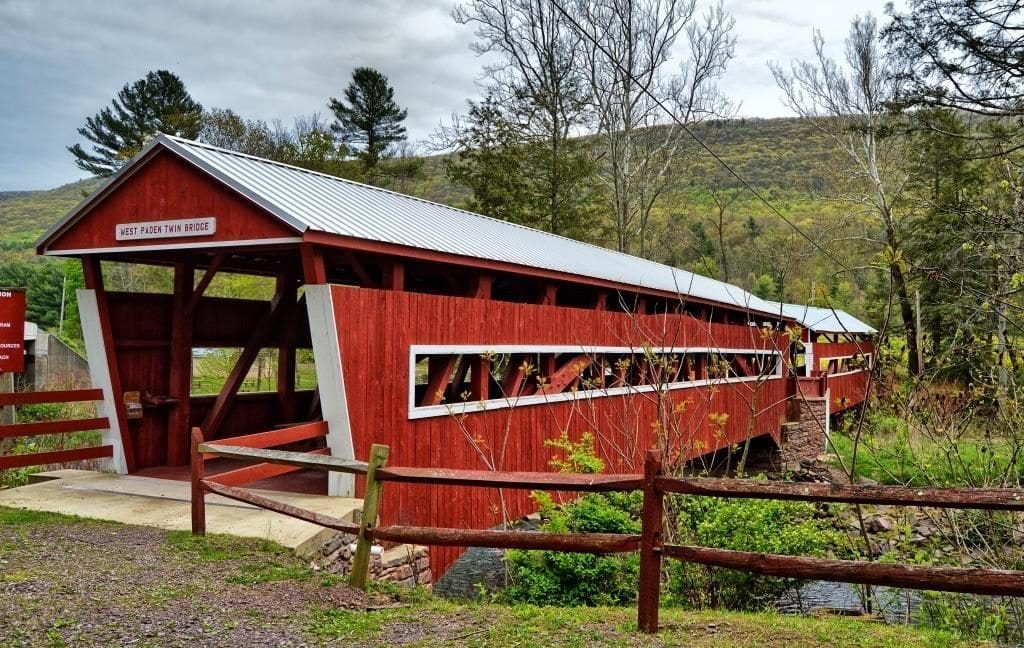
Why Were Bridges Covered?
Many reasons are suggested for covering bridges. One generally accepted reason is protection from weather and wood rot in order to make sure the bridges lasted longer. Sides and roofs protected the beams and timbers that served as key bridge supports. Less exposure to adverse weather conditions meant the bridges would hold up much better year after year.
Other explanations include:
- The covered bridges resembled barns so animals would be calm when passing through them.
- Having covers kept snow off the bridges and made for less maintenance in the winter months after the invention of automobiles.
- The bridge trusses were unsightly to many travelers, so adding sides and roofs created a much more aesthetically pleasing structure.
- To provide a place of shelter for travelers during storms.
From an engineer’s viewpoint, adding a roof to a bridge added stability and strengthened the entire structure. A more romantic utilization of covered bridges was as a location for courting couples to meet. Covered bridges are also known as “kissing bridges” for that very reason!
“The stories that this bridge could tell
Are numerous and happy and sad
Each could fill a book or two
With the experiences it has had”
– From “The Old Covered Bridge” by Doug Frederick
Winter Travel
Despite roofs and sides playing an important role in preserving key support beams, the earliest winters with covered bridges brought another challenge. In the latter part of the nineteenth century and the early twentieth century, workers would be paid to shovel snow onto bridge floors to enable winter horse and sleigh traffic. If the rest of the roads in the area were snow-covered, travelers would have utilized a horse-drawn sleigh in lieu of the traditional carriage to get around. Without snow covering the floorboards of the bridges, crossing them in a sleigh would otherwise have been extremely difficult.
A past resident of the area, Donald L. Diseroad, recalled his father using a rented horse and sleigh in the early 1900’s to complete his rural mail route when the roads were snow covered. He also noted that in the late 1800’s, his grandfather John Diseroad worked odd jobs throughout the year. One of his odd jobs in the winter was shoveling snow down on the bridge floors.
Treasured Views
Can't Get Enough of Our Covered Bridges?
Covered Bridge Photo Contest & Puzzles
Each year, the Visitors Bureau holds a photo contest to produce a 550-piece puzzle featuring one of the area covered bridges. Limited-edition puzzles have been produced the past fifteen years and have featured the East & West Paden bridges (multiple times), the Knoebels Bridge, Keefer Mills Bridge, Esther Furnace Bridge, Stillwater Bridge, Josiah Hess Bridge, Rupert Bridge, Kramer Bridge, a special Twin Bridges 10th Anniversary Puzzle, the Wanich Bridge, the Parr’s Mill Bridge, the Jud Christian Bridge, the Johnson Bridge, and most recently, the Creasyville Bridge. The 2025 edition of the puzzle is now available at our Welcome Center for $18 each. Extremely limited quantities of past years’ puzzles (2022 – 2024) are still available at our Welcome Center and can be purchased as a bundle (3 for $40) or $18 each. If you are interested in purchasing a past edition, please visit the Welcome Center during normal business hours (M-F; 8:30am – 4:30pm).

– 2025 PHOTO CONTEST CLOSED –
The 2026 Contest will return in April, 2026
To enter the 2026 contest, you’ll be able submit your photo directly into our online form. Note – there is a MAX file size of 20mb. If your image is selected as a finalist and a higher resolution photo is required, we will reach out via email.
Rules and Regulations:
- Entry to the contest is FREE.
- All photos must be owned by the person submitting them. By submitting, you are giving the Columbia-Montour Visitors Bureau permission to use your photo as their 2025 puzzle and in future marketing efforts for the contest and for the counties.
- All photos should be high-resolution (at least 2000 pixels on shortest side).
- A max of FOUR photos per photographer will be accepted.
- All photos must be of bridges located within Columbia or Montour County. For a map/list of the bridges, please click here.
IMPORTANT NOTE: Photo submissions of ALL 25 of our bridges will be considered for 2026.
The top overall photo will be selected by the Columbia-Montour Visitors Bureau to be featured as the 2026 Covered Bridge Puzzle. The winning photographer will have their name and a short bio published on the puzzle box. The winner will also receive a free puzzle and will be announced to local press outlets.
– 2025 Covered Bridge Contest Winner –
The Creasyville Bridge by Margie Hunsinger
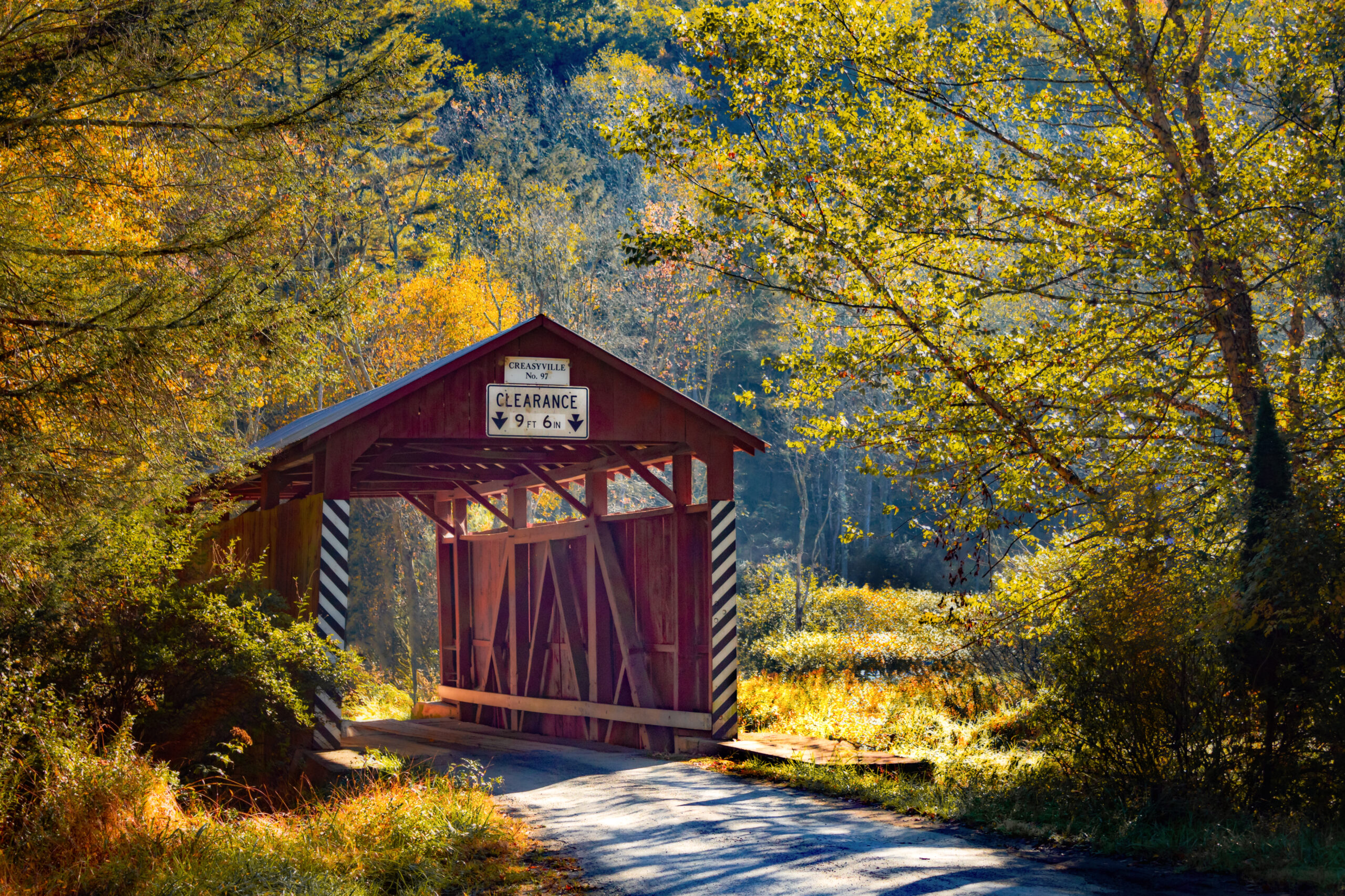
Become a Covered Bridge Enthusiast!
Bike the Back Roads & Discover our Covered Bridges
To create a cycling trip specifically with the covered bridges in mind, be sure to check out these great cycling route options!
